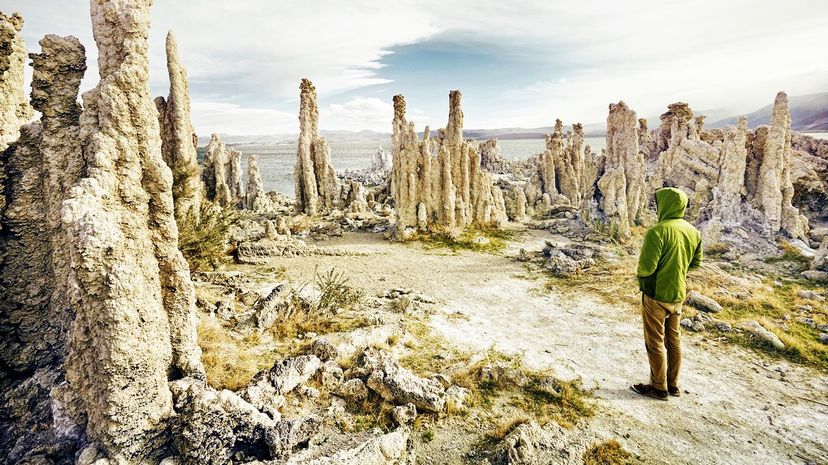
About This Quiz
The physical features of Earth make it one of the most special places in the entire solar system. The most violently destructive forces wreaked havoc on the planet for countless years and now we're blessed with beautiful features.
It's hard to imagine a river carving a canyon the size of the Grand Canyon, but it happened. You probably don't want to be around when tectonic plates smash together with enough force to create the Rocky Mountains, but you're probably happy it happened. It's cool to think of lava flowing into the ocean and creating an island, but you probably don't want to be there when it's happening. All that destruction and chaos has given us one very cool Earth. Some people even theorize that amid all the chaos and destruction, a piece of the planet chipped off, floated into space and perfectly began orbiting the planet, giving us a beautiful moon.
In the wake of erosion and eruption, we're left with mountains and valleys. The Earth is covered with more geographical features than we can count, but today we're only concerned with the ones that start with the letter S. You probably know the difference between saltwater and a salt pan. You've likely seen vacation pics filled with snowcaps and snowlines, and you've probably sat on the shore and stared at the stratosphere. Can you name all these geography terms that begin with S?
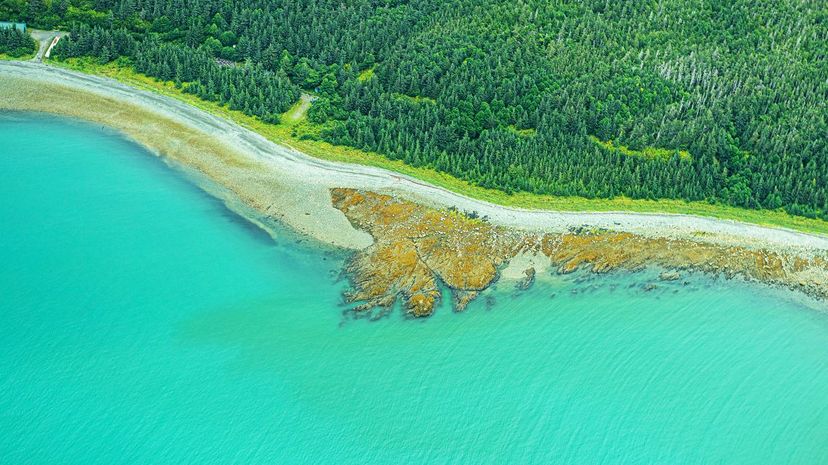
Of the 50 United States, 16 of them are landlocked and don't have any ocean shore. The U.S. state with the longest shoreline in the country isn't Florida, California or Hawaii. It's Alaska, and the state also boasts of being home to more than 3 million lakes.
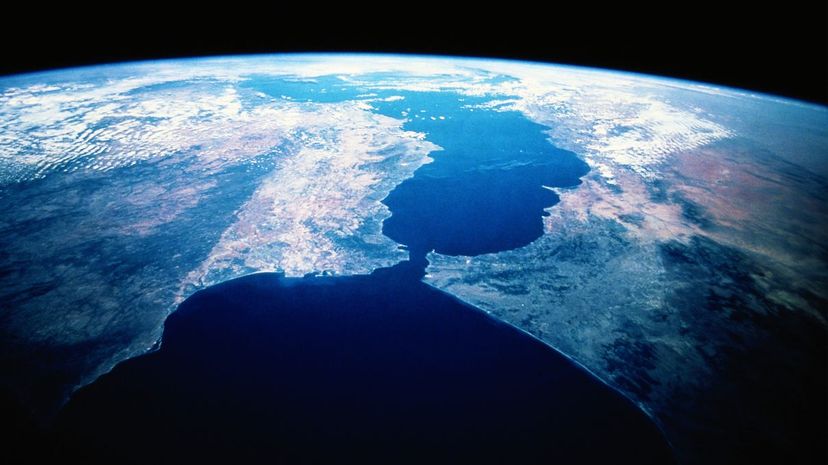
Straight is usually used as an adjective or adverb to describe anything that isn't bent or curved, but it can also be used as a noun to define a poker hand. It doesn't define a narrow passage of water. A strait is a narrow passage of water and is sometimes known as a channel. Shown here, the Strait of Gibraltar, between the Atlantic Ocean and the Mediterranean Sea, separates Spain and North Africa.
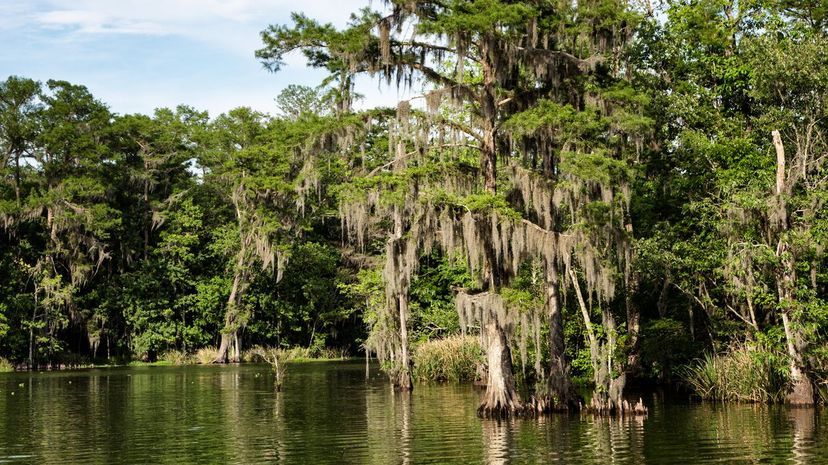
The largest swamp in America is the Atchafalaya Basin in Louisiana, shown here. The swamp covers more than 2,200 square miles of land in southern Louisiana. The Everglades in Florida features some of the most diverse ecosystems in the world, including many swamps.
Advertisement
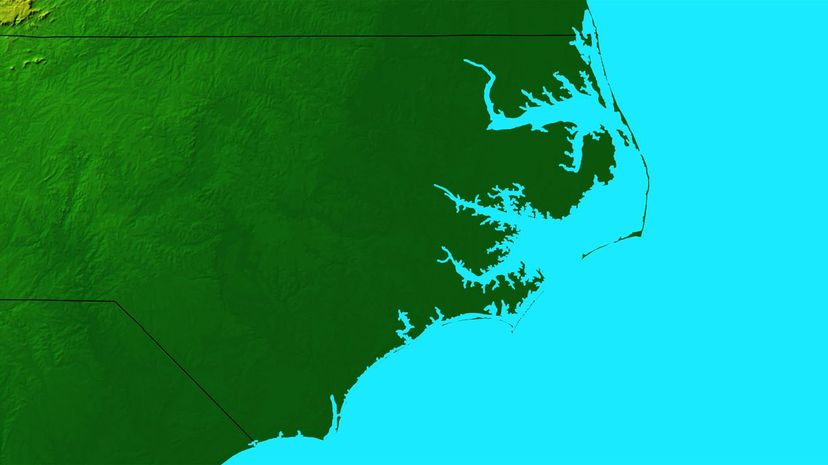
The Pamlico Sound in North Carolina is one of the largest in the country. This area in North Carolina actually consists of several sounds, including the Roanaoke Sound and Croatan Sound.
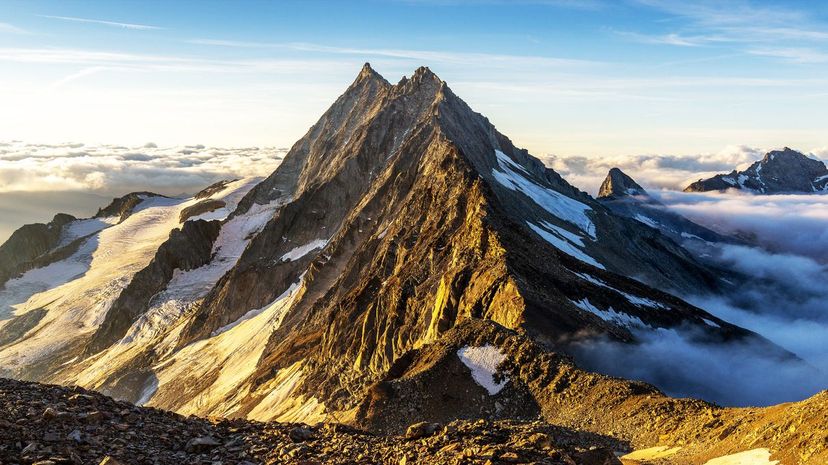
The summit is also known as the peak, apex, acme or zentih. It's the highest point of a mountain or hill. The bottom of the mountain is known as the base and is where the mountain meets normal ground level.
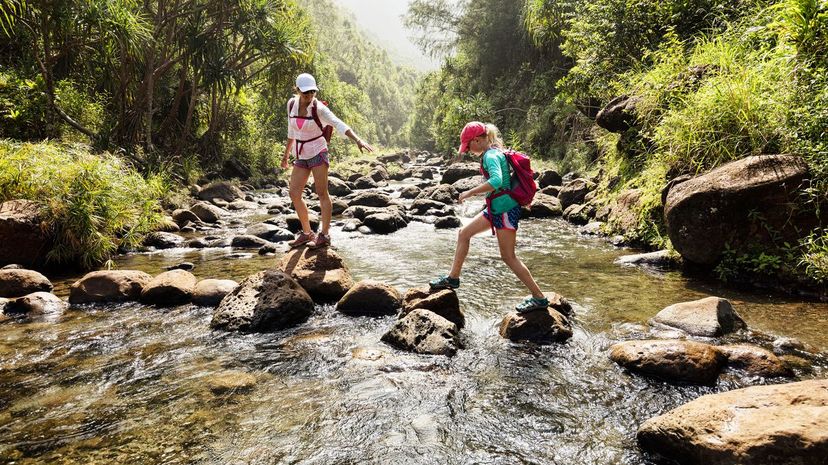
A stream is essentially a small river. There are several types of streams like deltas or alluvial fans. Streams are usually larger than brooks but smaller than creeks. A long and large stream is a river.
Advertisement
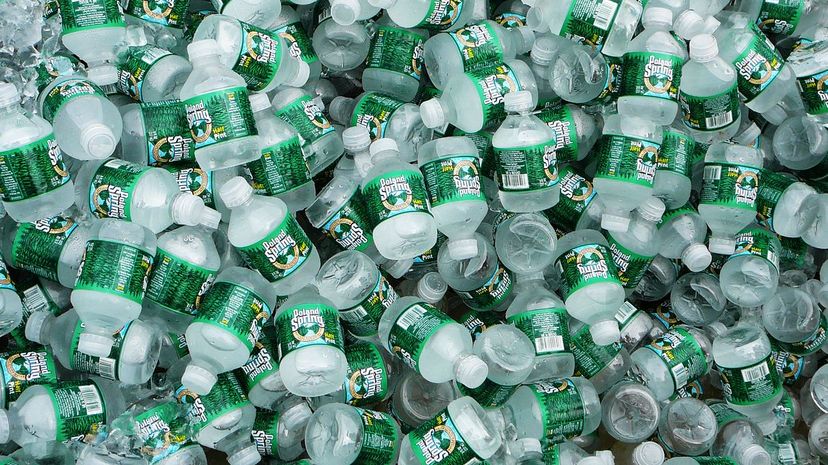
Poland Spring water comes from a water spring in Poland, Maine. Some of the most popular water springs in the world are hot springs like Iceland's Blue Lagoon or the Grand Prismatic Spring in Yellowstone National Park, which is America's largest.
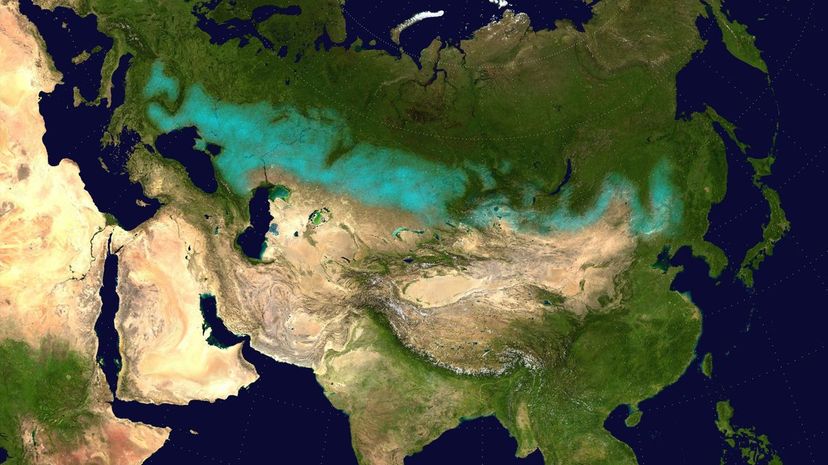
The Eurasian Steppe, shown here in turquoise, is also known as the Great Steppe and it's the largest grassland in the world. It stretches from Bulgaria to Mongolia. In between the Mississippi River and the Rocky Mountains are the Great Plains, which is a steppe that covers half a million square miles of land.

Smog is a portmanteau of smoke and fog. Smog occurs when fog or haze mixes with smoke or pollutants in the air. Smog can be deadly as it quickly spreads pollution over large areas. The Great Smog of London in 1952 and the 1966 NYC Smog are two of the most famous smog events in history.
Advertisement
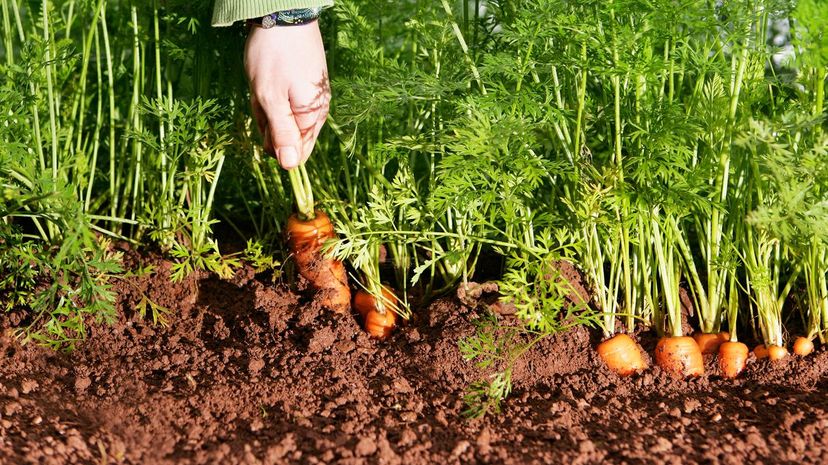
Soil is the top layer of the planet. It's made of minerals, air, water, waste, living matter, decaying matter, rocks and more. It can be seen as a layer of skin wrapped around the planet. It's where plants grow.
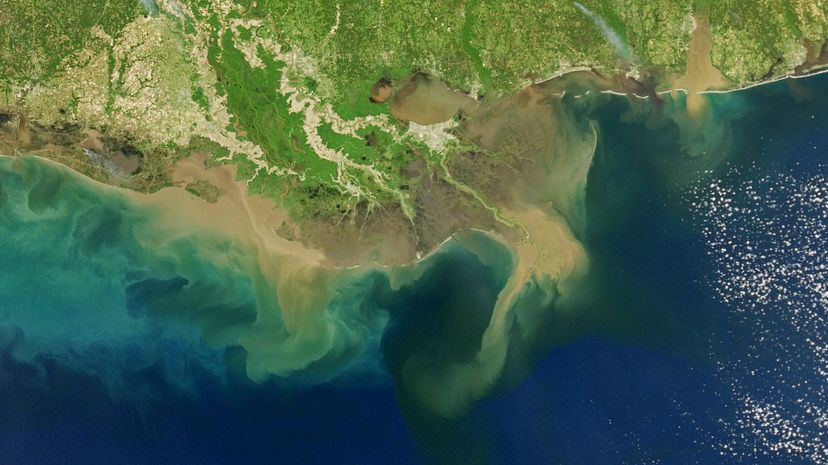
Sediment is just very, very small pieces of solid matter that can literally be anything. When sediment accumulates and hardens, it creates sedimentary rock. The distinct layers of a sedimentary rock are called the strata.
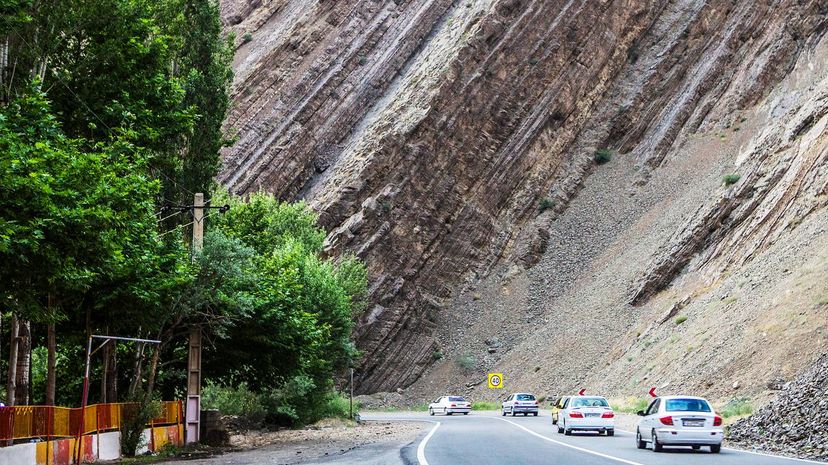
A sedimentary rock is made of sediment, which is loose matter carried by wind or water and eventually deposited somewhere. When enough sediment accumulates and hardens, it can form a rock. Sedimentary rocks sometimes look like they're layered or made of several different materials.
Advertisement
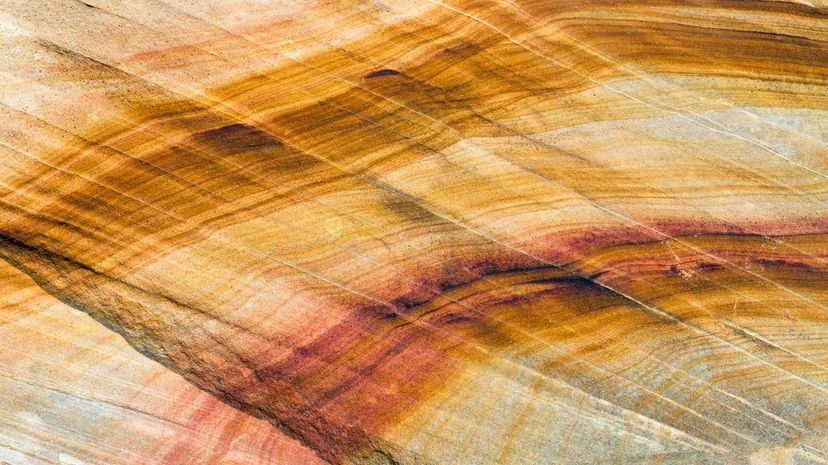
Soapstone is a metamorphic rock, which means it was created by way of transformation. Scoria is an igneous rock, which is a rock formed by the cooling of magma. Sandstone is made from sediment and its strata are often distinctly visible.
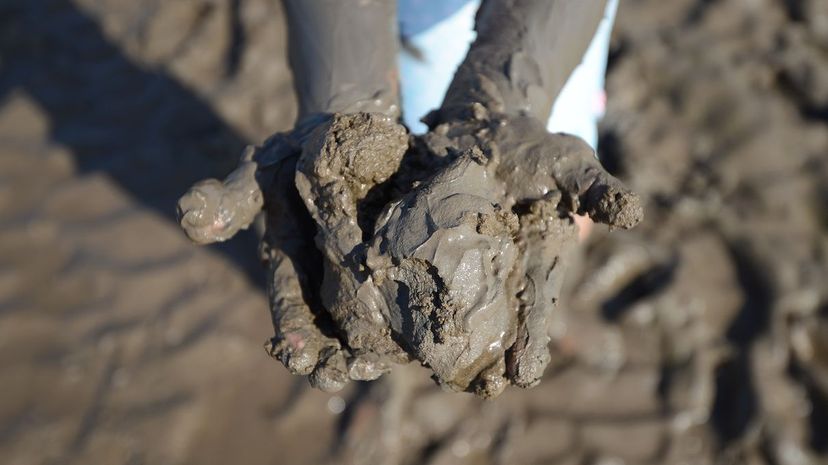
Silt is usually tiny pieces of quartz about the size of a grain of sand. A handful of dry silt might feel like powder or dust and it's sometimes known as "rock dust." Wet silt, shown here, can resemble silky-feeling mud. Sedimentary rock can be made of only silt, and those rocks are called siltstones.
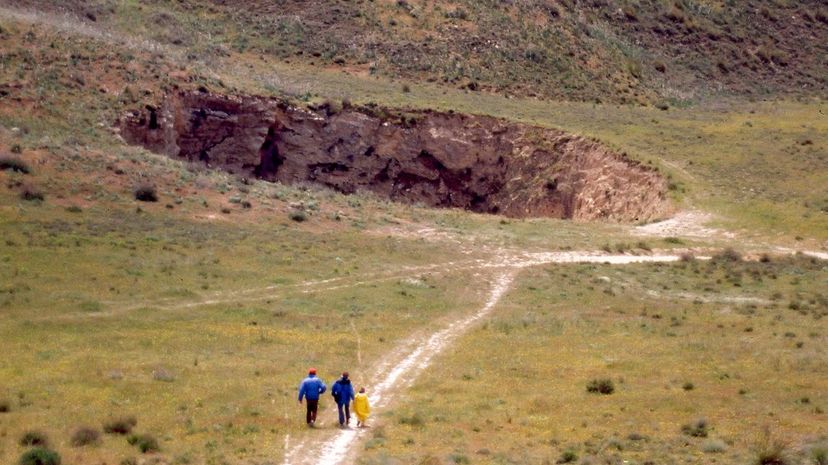
A sinkhole is a crater or depression that occurs when material below the surface is removed and the surface caves in. A pothole is caused by a defect on the surface layer, whereas a sinkhole is caused by a defect underneath the surface layer.
Advertisement
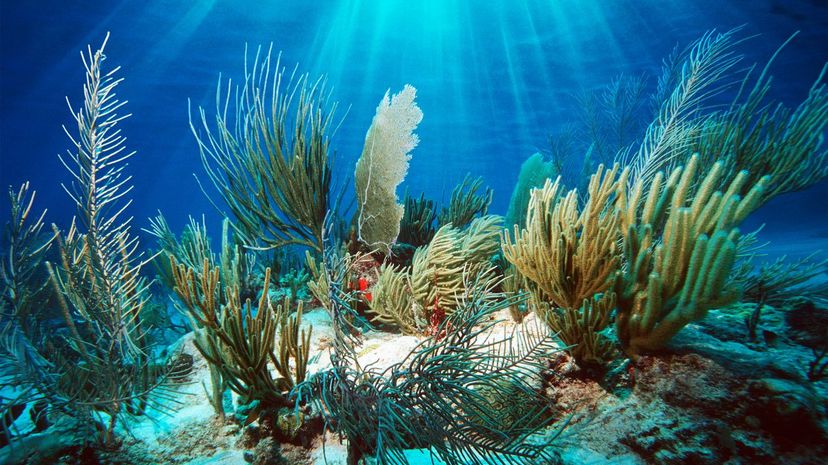
The ocean floor is one of the most mysterious parts of the planet. It covers a majority of the world, but only about 5% of it has been explored. We have little to no clue what's down there and extraordinary discoveries are made every time we look.
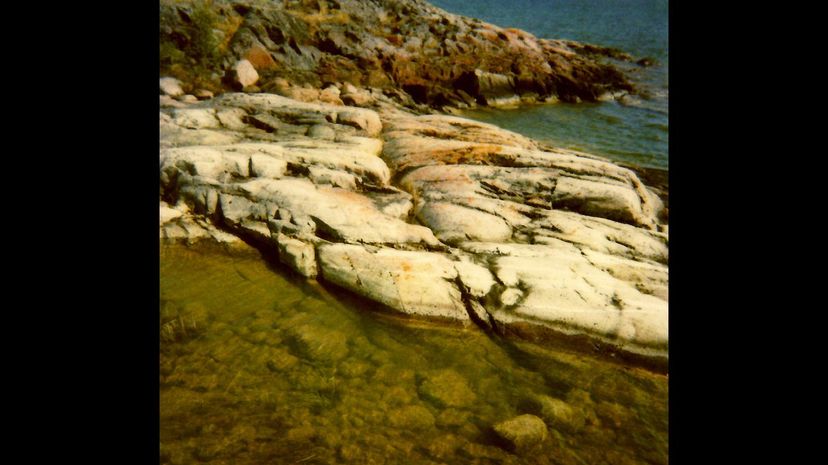
A sheepback rock gets its name because it resembles a sheep's back. The official name of the rock is roche moutonnee, and it has a distinct shape. The rock formations were first discovered and defined in the 18th century.
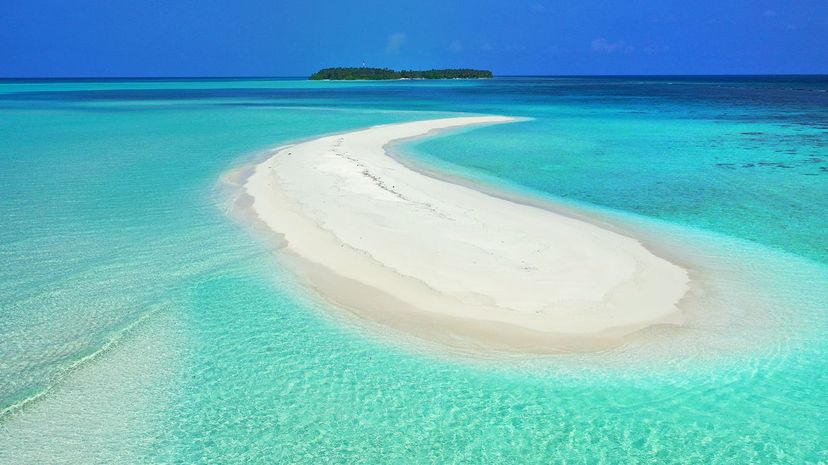
A shoal is a very shallow area of water created when sand and sediment accumulates enough to rise to the top of the water. Shoals are also known as sandbars and sandbanks. A shoal also defines a large group of fish swimming together. A school is a large group of fish swimming together in the same direction.
Advertisement
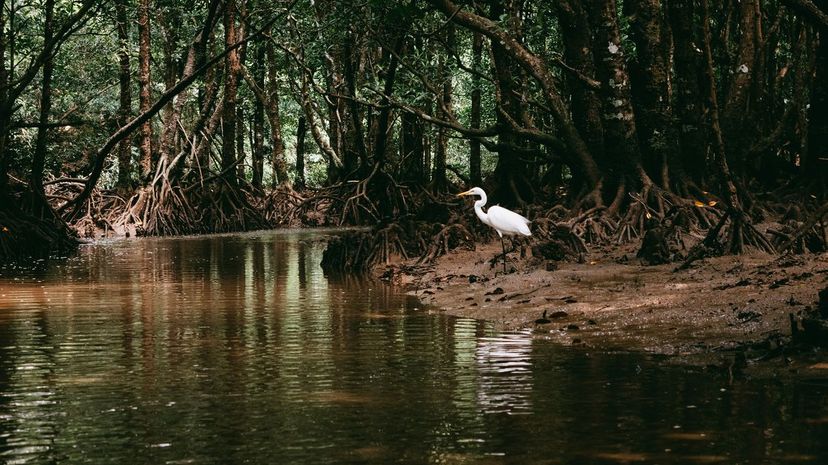
Sloughs are wetlands where water doesn't flow, flows insanely slow or only flows during certain times of the season. It can also describe an inlet that isn't consistently filled with water and has no water flow.
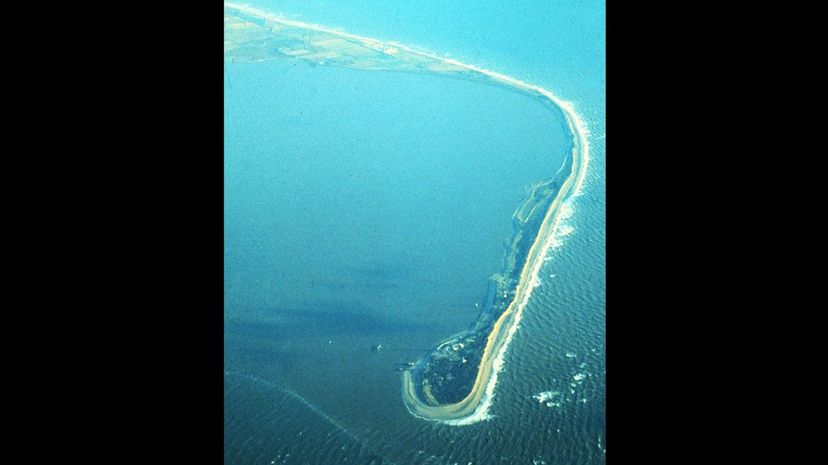
Spits form when sediment deposits and accumulates enough to create a landform that projects into the ocean. One of the most famous in the world is Spurn Head, shown here, located off the coast of Yorkshire. Spurn Head is more than three miles long.

If you've ever watched the show "Game of Thrones," you're familiar with spurs and more specifically spur castles. Spur castles are castles built on spurs. They are surrounded by steep cliffs on three sides and offer great natural defense.
Advertisement
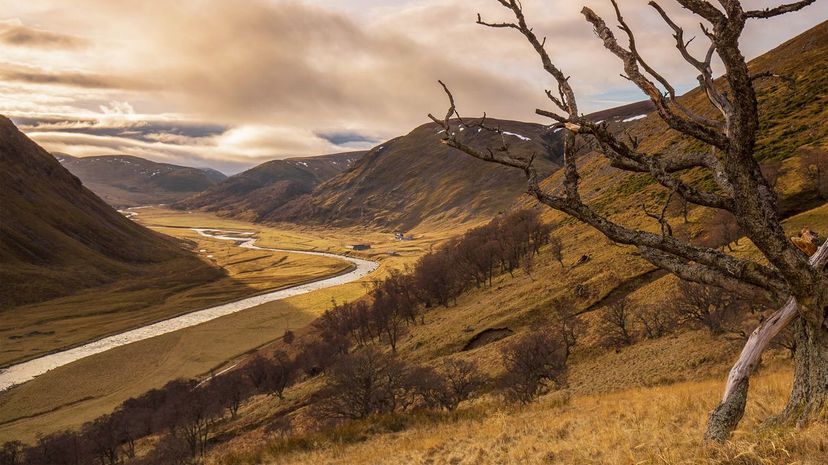
Strath stems from a Gaelic word mostly used in Scotland to describe broad valleys. A glen also stems from Gaelic and is often used in Scotland. A glen is a narrow valley and a ravine is a narrow valley with steep slopes on both sides.
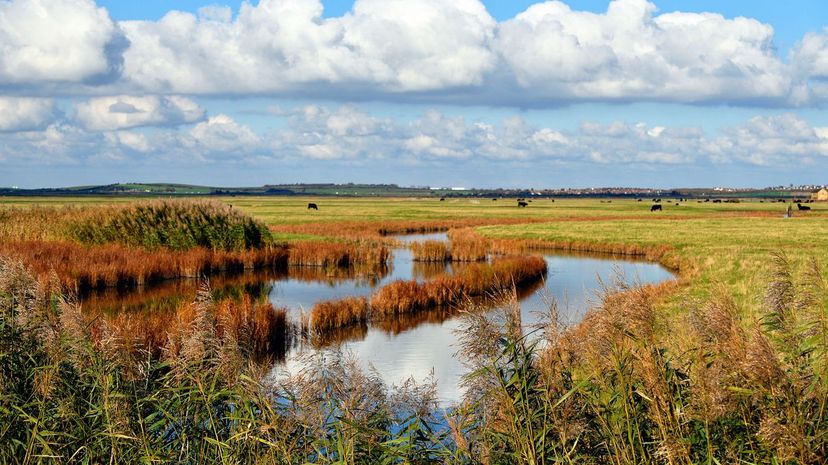
A swale is any shady, sunken or marshy spot, and they can be natural or man-made. Man-made swales are usually used for irrigation control and to manage runoff. Beach swales are shallow trenches between sandbars.
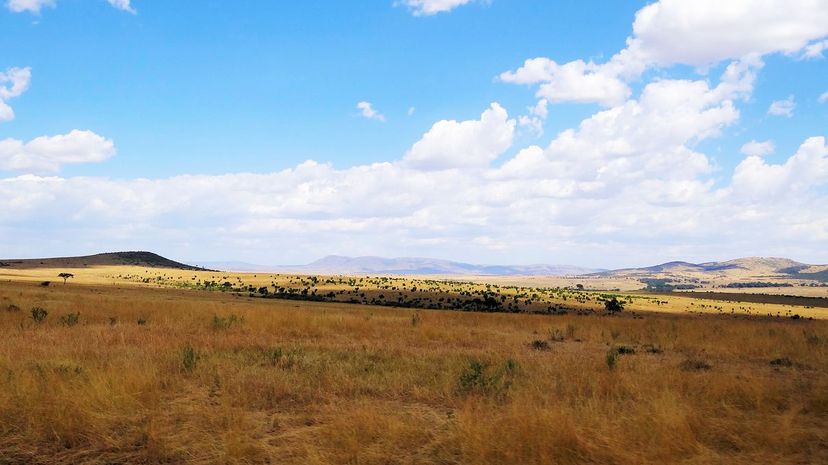
A savanna is a steppe near the equator. It's hotter than a steppe and drier than a forest but consists of more grassland and vegetation than a desert. The Serengeti in Tanzania and Maasai Mara in Kenya, shown here, are two of the most famous savannas in the world.
Advertisement
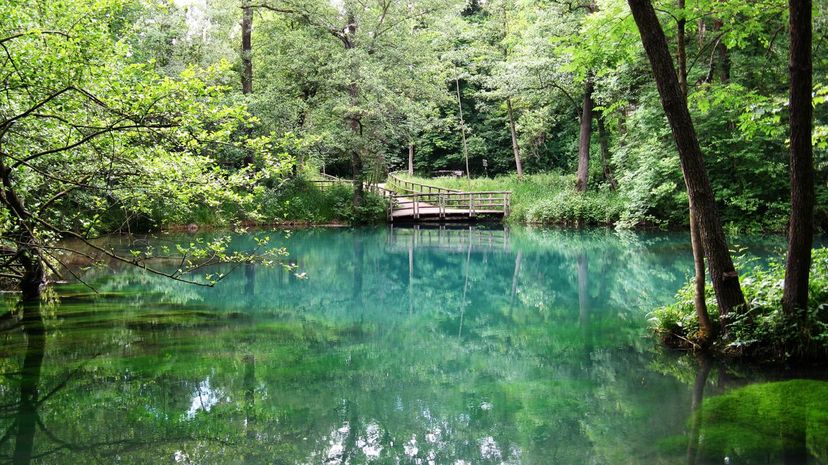
A river's source is also known as its headwaters and it can be anything from a glacier to a lake or spring and anything in between. The end of a river is called its mouth or delta and it usually deposits into an ocean, lake or marsh. Shown here is Karst Spring, source of the river Rhume in Germany.
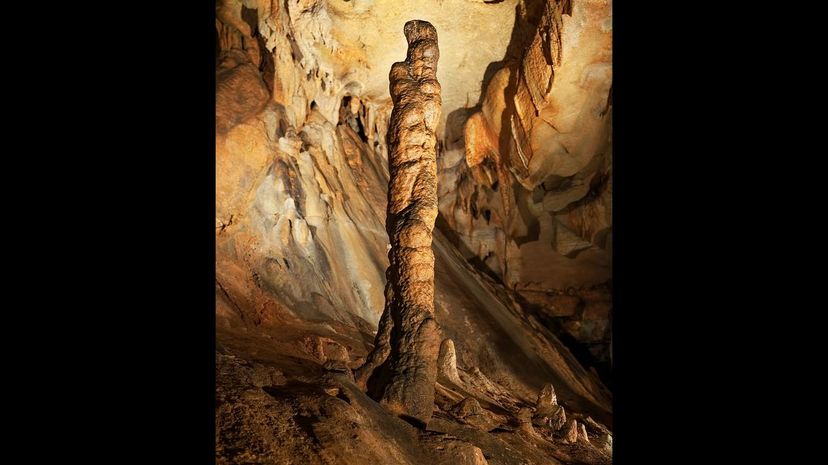
Stalagmites are formed as water drops to the floor of a cave and material within the water accumulates and hardens. Stalagmites can be made from a bunch of things from lava to limestone and even hardened rodent urine. Lava stalagmites can form in hours while others may need thousands of years.
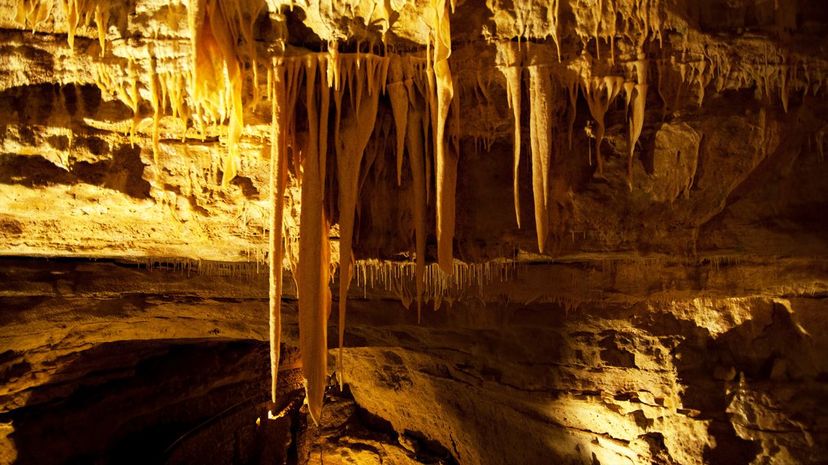
Stalactites are the counterparts of stalagmites and sometimes they even connect with each other. The easiest way to remember the two is that stalaCtites grow from the Ceiling and stalaGmites grow from the Ground.
Advertisement
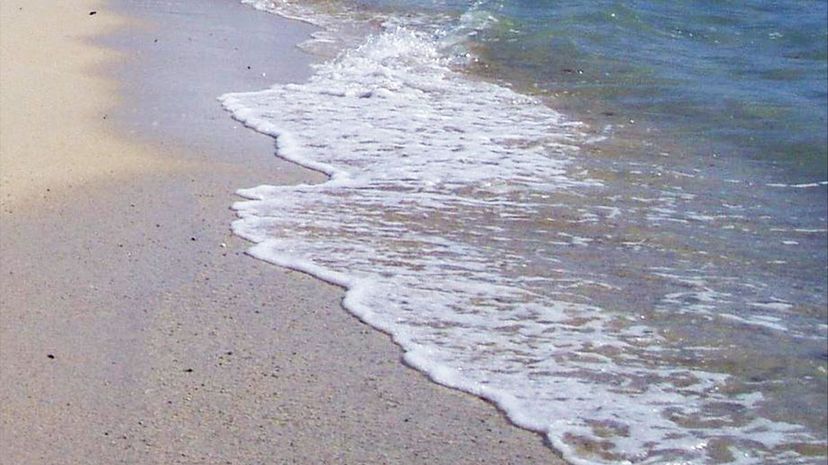
Onomatopoeia is the process of creating words that phonetically sound like what they describe, and swash is one of those words. The swash is the last layer of beach water that washes across shore after a wave breaks. The swash usually creates a line in the sand between wet and dry.
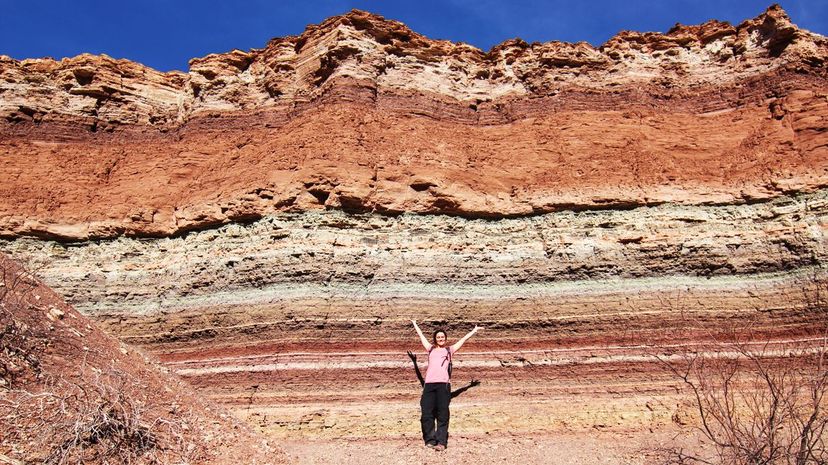
You can distinctly see each layer of some sedimentary rocks, and these layers are called strata. One layer is called a stratum and the study of these layers is called stratigraphy. Strata can be seen all over the world.
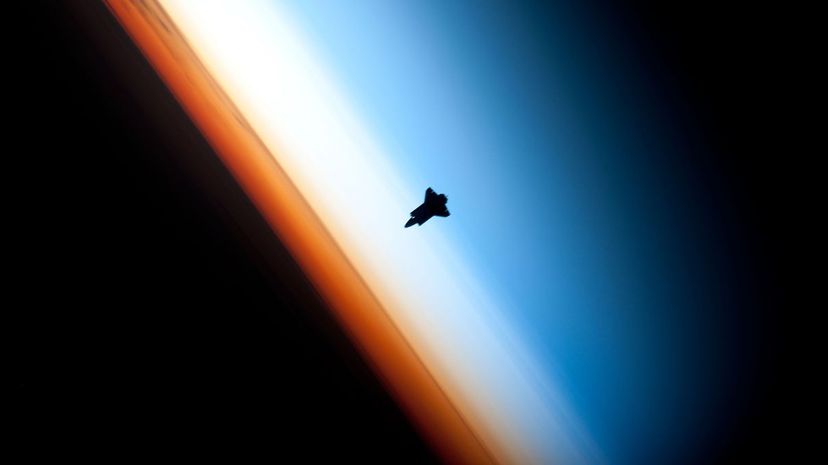
When you look up at the sky, the first 7.5 miles you can see is the troposphere. The stratosphere begins at the end of the troposphere and extends about another 25 miles. Jet planes don't fly higher than the stratosphere. A rocket is usually needed to break the stratosphere. Shown here, Space Shuttle Endeavour straddles the stratosphere and mesosphere.
Advertisement
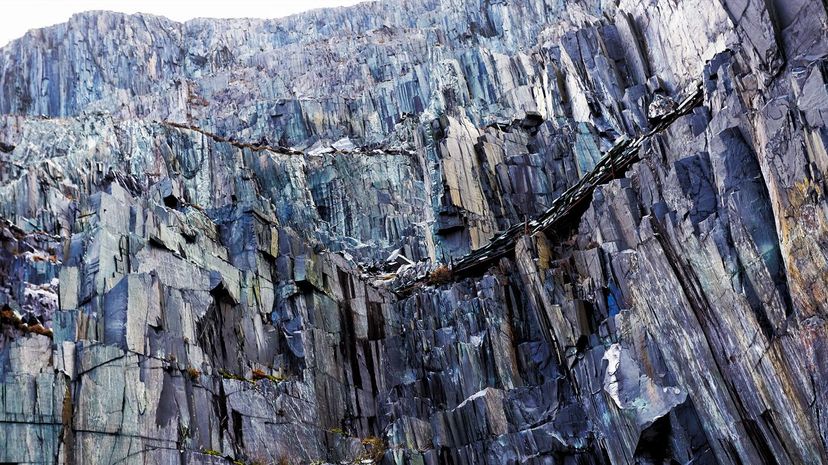
Shale and sandstone are sedimentary rocks and scoria is an igneous rock. They're much weaker than metamorphic rocks, which are usually created under intense levels of heat and pressure. Slate can be formed in several colors from gray to purple to blue.
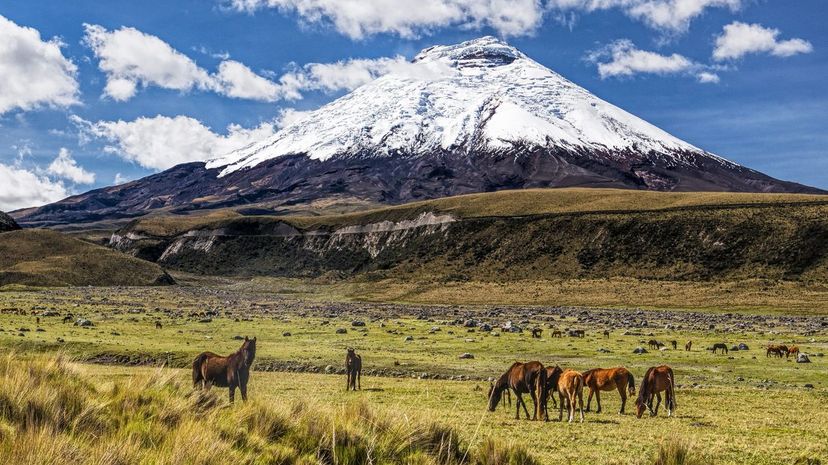
Some elevations are so high they're always covered in snow. These coverings on mountains are called snowcaps. The bottom of a snowcap is the snowline. It's the lowest altitude where snow doesn't melt, no matter the season. Snowlines can rise and fall with the seasons, but they never disappear.
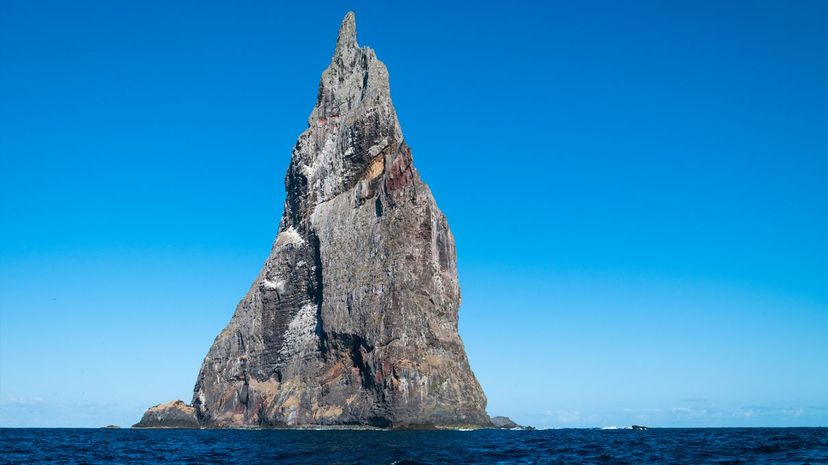
Sea stacks are some of the coolest geological features on Earth and usually create awesome vistas. The largest stack in the world is Ball's Pyramid, shown here, in the Pacific Ocean near Australia. The limestone stacks in Vietnam's Ha Long Bay and and the Twelve Apostles near Australia are some of the world's most famous.
Advertisement
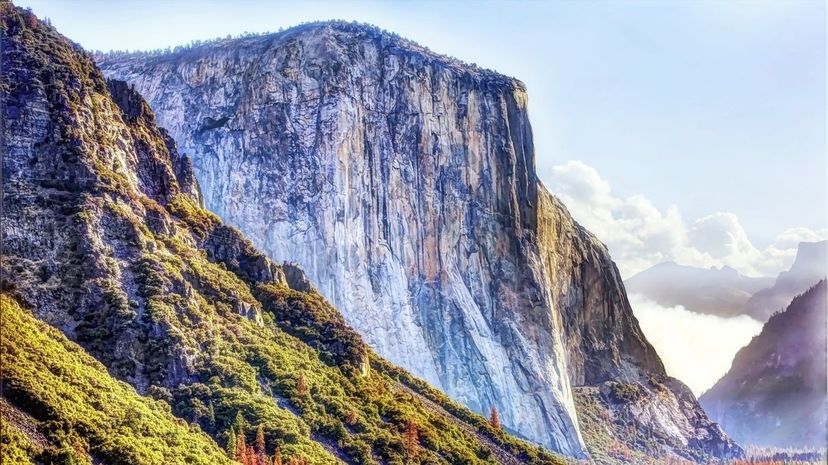
Scarp is short for escarpment and it usually forms after a piece of the mountain falls off or extreme erosion creates a sheer cliff. Some of the most famous sheer cliffs in the world are Ireland's Cliffs of Moher, Canada's Mount Thor and California's El Capitan, shown here.
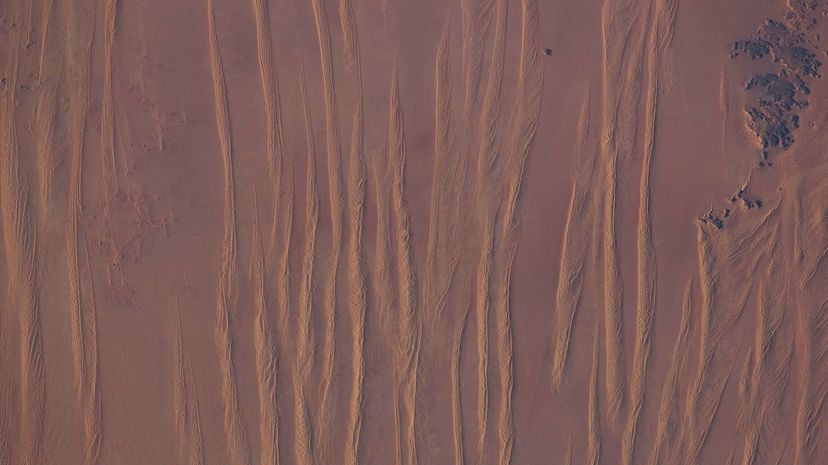
Seif dunes are also known as longitudinal dunes and they can be up to 100 miles long. They have two steep faces on each side, and that creates a sharp crest at the top of the dune. Seif dunes run in the direction of the wind. Shown here are seif dunes in the Great Sand Sea in southwest Egypt seen from the International Space Station.